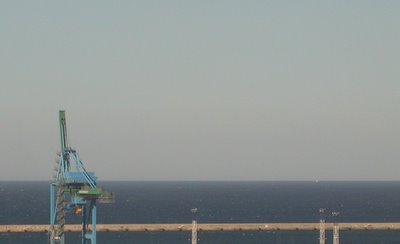The Final Three
7. We are witnessing a redemption of practice in the discipline of architecture. Many conversations are being centered around ways/means of practicing architecture. Has the status of contemporary urbanism affected this change? Are architects "redeeming practice" as an implicit response to the challenges of urbanism?
8. How do you see the perimeter evolving as the economy transitions from one based on heavy industry to a technological era of smaller, faster, and more efficient? Does it modify the size, speed or value of the perimeter?
9. What does it mean for a graduate program in architecture to work the perimeter? What are we doing by implication when we think the perimeter?
8. How do you see the perimeter evolving as the economy transitions from one based on heavy industry to a technological era of smaller, faster, and more efficient? Does it modify the size, speed or value of the perimeter?
9. What does it mean for a graduate program in architecture to work the perimeter? What are we doing by implication when we think the perimeter?

